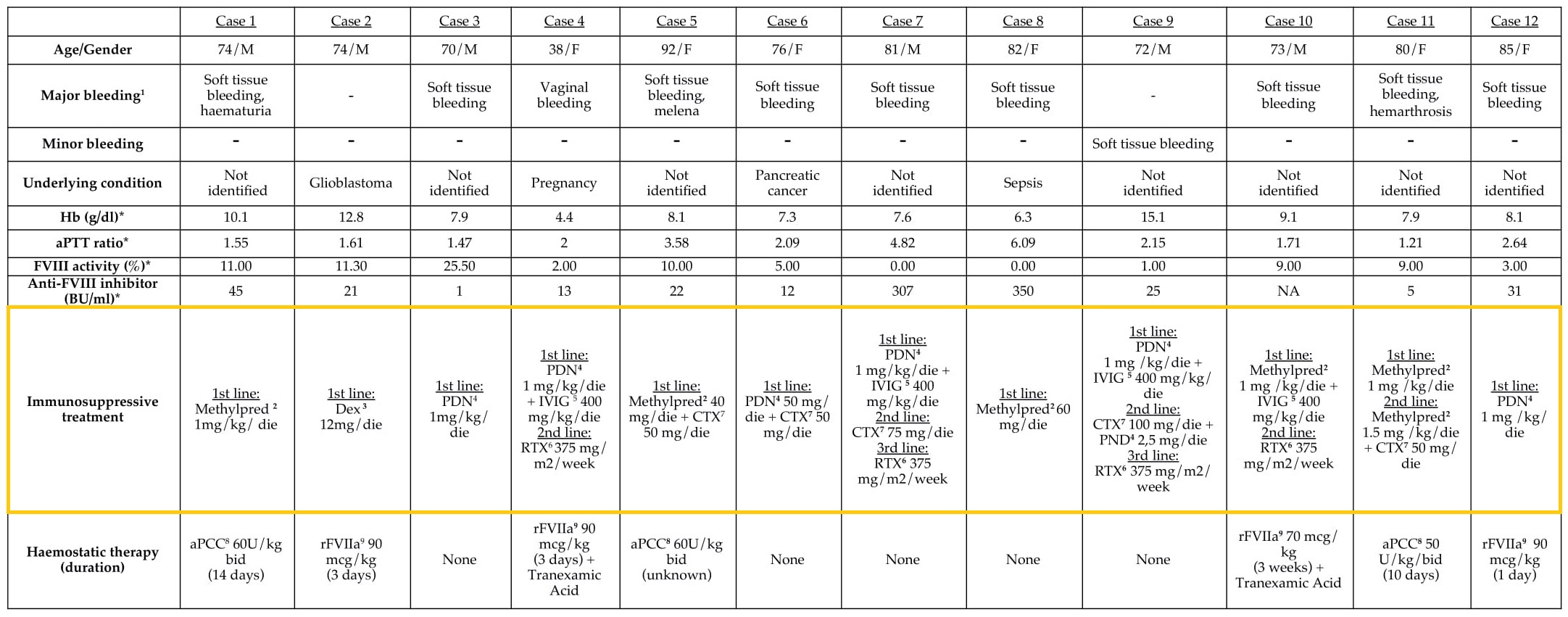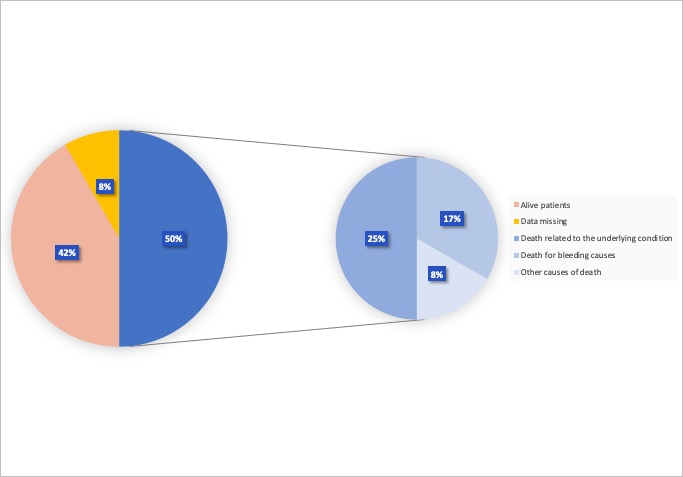S. Varvello1, M. Scandella2, G. Gargiulo2, B. Montaruli3, B. Parola4, G. N. Saglio1, P. Sivera1
1Department of Haematology, Umberto I Hospital, Turin, Italy; 2Department of Internal Medicine, San Giovanni Battista Hospital, Turin, Italy; 3Department of Clinical Analysis, Umberto I Hospital, Turin, Italy; 4Department of Pharmacy, Umberto I Hospital, Turin, Italy
ACQUIRED HAEMOPHILIA A: MAIN FEATURES
Acquired haemophilia A (AHA) is a rare hematologic disorder potentially leading to life-threatening bleeding.
It is caused by inhibitors against factor VIII (FVIII).
AHA typically manifests itself through spontaneous or post-surgery bleeding in patients with no personal history of haemorrhages.
It is notoriously associated to specific risk factors, such as pregnancy and malignancies, but its aetiology remains unclear in half of the cases.
The therapy is based on management of underlying conditions, immunosuppressive drugs and, in acute haemorrhagic episodes, on haemostatic treatments.
OUR CASE SERIES
12 patients with newly diagnosed AHA visiting our Unit in a period ranging from January 2009 and December 2018

IMMUNOSUPPRESSIVE THERAPY
7 out of 12 patients responded to I line IST
5 patients required II line IST
2 out of 5 patients required more than 2 line of IST

- 3 patients received aPCC
- 4 patients received rFVIIa

Treatment failure and death for bleeding causes were described in two cases.
Symptomatic relapse during or after treatment occurred in three patients.
One suspected thrombotic event was reported during therapy with rFVIIa.

CONCLUSIONS
AHA still represents a therapeutic challenge.
Treatment failure, relapses and thrombotic side effects of bypassing agents are common issues.
The development of new therapeutic strategies, such as rpFVIII, represent a great progress in treating AHA, especially in patients experiencing these complications.
